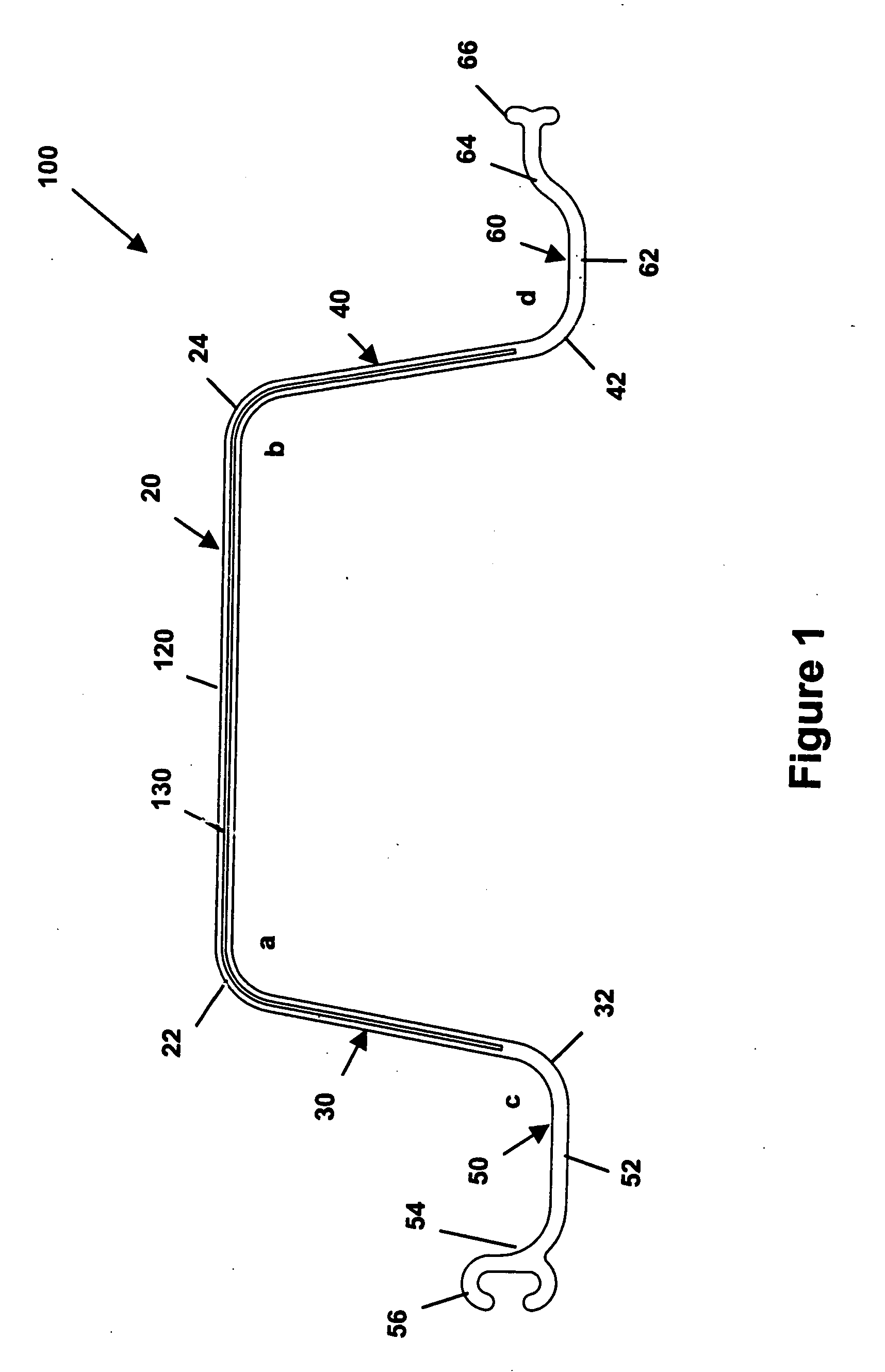Method of manufacturing a metal-reinforced plastic panel
- Summary
- Abstract
- Description
- Claims
- Application Information
AI Technical Summary
Benefits of technology
Problems solved by technology
Method used
Image
Examples
Embodiment Construction
)
[0034] The present invention is directed to a retaining panel that may protect against a bounding shore with its top preferably extending above ground level and its bottom preferably anchored down into the ground below the water bottom. FIGS. 1 and 2 illustrate cross-sectional views of two exemplary embodiments of a retaining panel of the present invention. FIGS. 6 through 11 illustrate various perspective, plan, and elevational views of the exemplary embodiments shown in FIGS. 1 and 2. The retaining panel 100 includes a sheet of metal substrate 130, a coextruded layer of plastic 120, a central portion 20, a first side portion 30, a second side portion 40, a first flange 50, and a second flange 60. As shown in these figures, the retaining panel 100 is preferably of one-piece construction for maximum durability and longevity. A one-piece construction preferably eliminates unnecessary joints which may eventually fail under the pressures and loads in the field. In fact, the inventors ...
PUM
| Property | Measurement | Unit |
|---|---|---|
| Width | aaaaa | aaaaa |
| Width | aaaaa | aaaaa |
| Shape | aaaaa | aaaaa |
Abstract
Description
Claims
Application Information
 Login to View More
Login to View More - R&D
- Intellectual Property
- Life Sciences
- Materials
- Tech Scout
- Unparalleled Data Quality
- Higher Quality Content
- 60% Fewer Hallucinations
Browse by: Latest US Patents, China's latest patents, Technical Efficacy Thesaurus, Application Domain, Technology Topic, Popular Technical Reports.
© 2025 PatSnap. All rights reserved.Legal|Privacy policy|Modern Slavery Act Transparency Statement|Sitemap|About US| Contact US: help@patsnap.com



